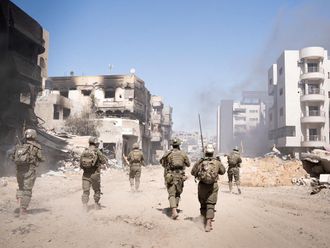Travelling to my classes in Belfast involves an hour-and-a-half journey through the Irish countryside. My aim is to use this time to read the required articles for the particular class I have that day; whether this includes debates on international political economy versus green political economy or whether terrorism works, this is the time to get acquainted with the latest views and arguments. And for the most part, it works, and I imagine the debates in my mind and think of the ways in which academics can contribute to a better world — and whether this better world is indeed possible. When I get bogged down in nihilistic thoughts such as these, my eyes are drawn towards the window as my fellow passengers and I bob along the bumpy road.
On the journey we pass through the Glenshane, an area of ‘outstanding natural beauty’ (the bureaucrat’s term to standardise the earth’s artistry and soul). The road cuts through the landscape, slashing and carving the emerald fields with tarmac, wooden stakes and barbed wire. Speckles of sheep and their little lambs munch on the greenest grass, frolicking and carefree; the sun’s rays cut through layers of stern-looking clouds, hues of grey that comfort a mood of melancholy — a final caress of the sun on the earth before the night sky takes over, a loving touch of the land until the last thread of light fades from view. My inner poet comes alive. Well, sort of.
Describing beauty
Any attempt to describe such beauty seems impossible. But I try. For me, artists and poets are born of landscapes such as this. I’ve been reading Marcel Proust recently, the revered French novelist who urges us to take the time to describe the beauty that we see and how such natural artistry makes us feel.
And this is what I do while I’m gazing through the windows on the bus; a bus that carries thousands of people to and from their homes and their places of work each day. I try to describe what I’m looking at and how it makes me feel. I know it sounds strange, but there is a difference between looking at something and really seeing something. It also feels somewhat selfish these days with so much pain in the world; surely there are better ways to use time?
Proust asked the question of the meaning of life and sought to answer it, and through exploring social status and love, he eventually came to the conclusion that art was what life was worth living for and gave true meaning to our existence. I haven’t finished his seminal work yet, In Search of Lost Time, but I hope the journey through the pages will be like my bus journey, one of discovery, and help me find some answers to my own questions of life.
While I agree with Proust and believe that art can be a tonic for the evils of the world, there is also space for compassion and aid for other people. He describes memories of the past and the comfort of family and home and slips us into a delicious reverie along with him. For me, these memories show that without each other, those that help create such perfect memories, we are nothing, and we blossom as human beings when we do something that enriches the life of another. There are too many words and not enough space to try to explain the meaning of life — Proust wrote around 1.3 million words for his novel, which features seven volumes. But now that spring is here, this seems like the right time to explore the many ways in which we can blossom.
Christina Curran is a journalist currently studying a Masters in International Relations at Queen’s University, Belfast.








